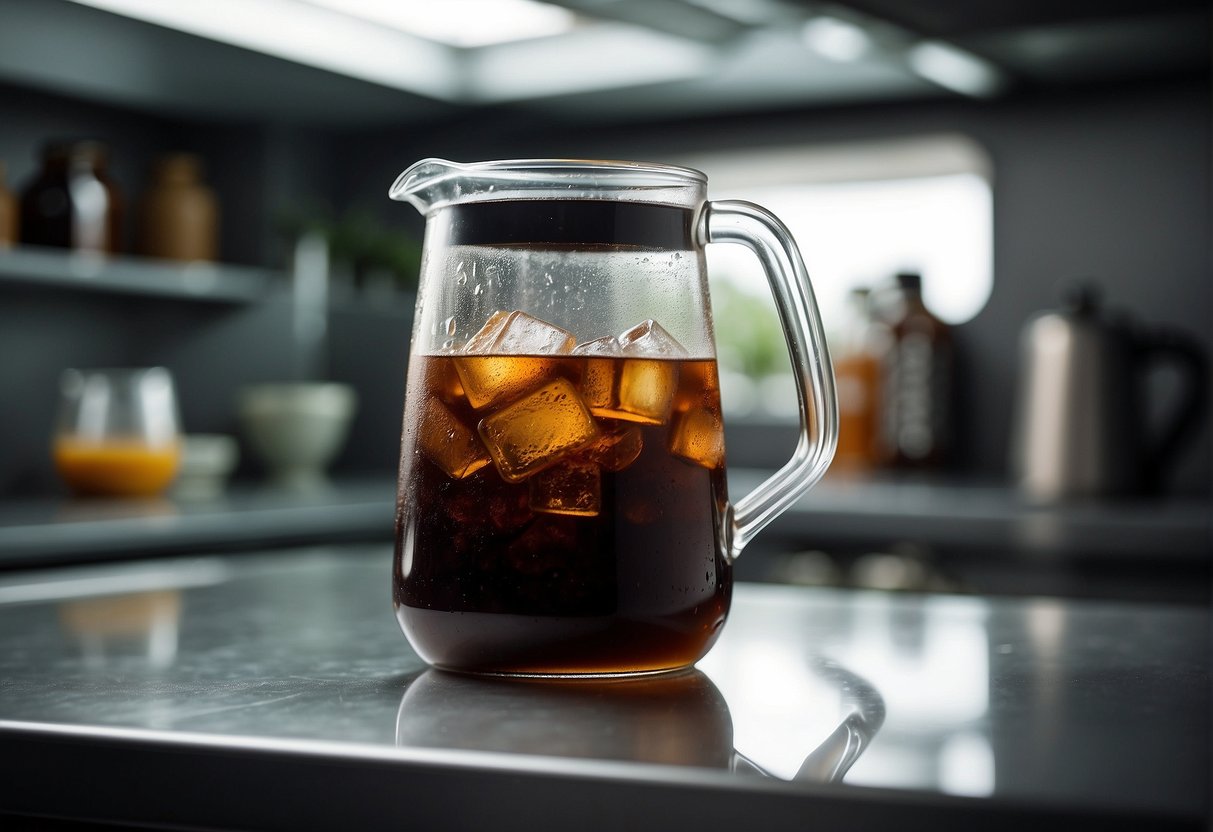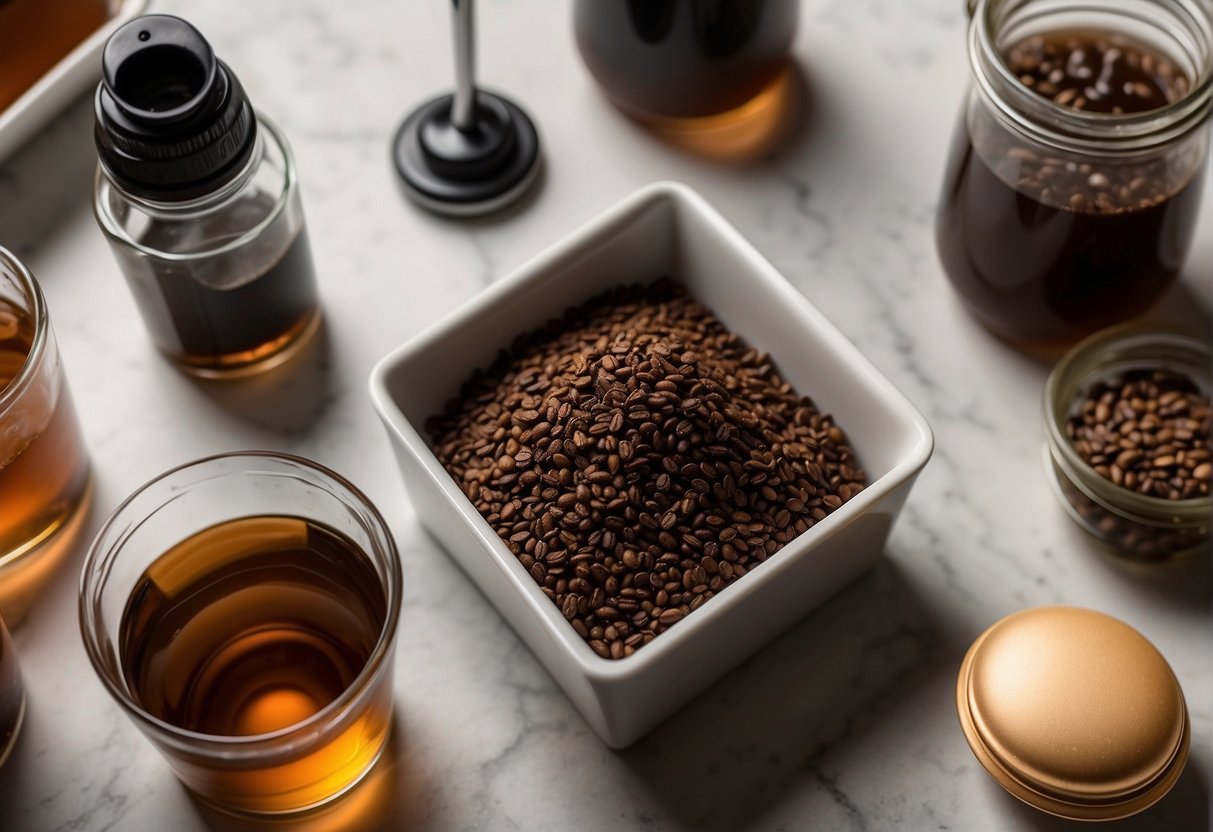When it comes to preparing cold brew coffee, a common question that arises is whether it’s better to steep it in the fridge or at room temperature. The choice between these two methods can have an impact on the flavor and longevity of the cold brew. Storing cold brew in the refrigerator is generally recommended because it slows down oxidation and maintains freshness. This method extends the beverage’s shelf life, allowing it to stay fresh for up to a week or more.

On the other hand, brewing cold brew at room temperature can be a quicker process and is often preferred by some for its convenience. Room temperature brewing allows for a faster extraction, but it still takes several hours. While the cold brew can be enjoyed shortly after brewing, it must be refrigerated afterward to prevent spoilage. If stored at room temperature after brewing, the cold brew can degrade more rapidly and is best consumed within a day or two to ensure it remains fresh and flavorful.
Cold Brew Basics
https://www.youtube.com/watch?v=C6gXGD330nc&embed=true
In the world of coffee, cold brew stands out for its smooth flavor profile and reduced acidity, offering a unique approach to coffee extraction through prolonged contact with water at lower temperatures.
Understanding Cold Brew Coffee
Cold brew coffee is a method of producing coffee that involves steeping coffee grounds in cold water for an extended period, typically 12-24 hours. Unlike traditional hot brewing methods, cold brew relies on time rather than heat to extract the flavors from the beans. This slow extraction process results in a coffee that has a smoother, full-bodied flavor with low acidity.
Cold Brew Vs. Iced Coffee
It’s essential to distinguish cold brew from iced coffee. Iced coffee is simply coffee that has been brewed hot and then cooled down with ice. In contrast, cold brew is made with no heat at all, leading to a different flavor profile that’s often described as sweeter and more flavorful, both because of the extraction process and the types of beans used.
The Brewing Process
To make cold brew:
- Coffee grounds should be coarsely ground to ensure optimal extraction without over-extraction, which can lead to bitterness.
- The grounds are then placed in a cold brew maker or another airtight container with cold water.
- The mixture is stored in a refrigerator or at room temperature, where it steep’s slowly.
- Finally, the brew is filtered to remove the grounds, resulting in a strong, concentrated coffee that can be diluted with water or milk according to preference.
The choice of brewing method and whether to steep it in the refrigerator or at room temperature can affect the flavors and intensity of your cold brew. Brewing at room temperature typically yields a stronger brew faster due to the slightly higher temperatures accelerating the extraction process, whereas brewing in the refrigerator may take longer but can produce a more delicate and nuanced flavor profile.
Choosing the Right Ingredients

When making cold brew coffee, the two fundamental ingredients are coffee beans and water. Selecting high-quality beans and using the best water available can significantly enhance the flavor profile of the final brew.
Selecting Coffee Beans
Coffee Beans: The choice of beans significantly impacts the taste of cold brew coffee. For a strong, bold flavor, dark roast beans are favored due to their smoky, chocolatey notes. Those preferring a lighter, more floral or fruity profile might opt for a light roast. Medium roast beans provide a balance between the two, often bringing a pleasant acidity and a fuller body compared to light roast.
- Grind Size: For cold brew, the grind size should be coarse, akin to raw sugar granules. This larger grind helps to ensure a smooth, well-extracted brew without the bitterness that can come from over-extraction.
Importance of Water Quality
Water: The water used in brewing plays a crucial role, as it makes up the majority of the drink. Using filtered water can remove impurities that may interfere with the coffee’s flavor.
- Temperature: Cold brew is typically made with room temperature or cooler water, allowing for a gradual extraction of flavors over an extended period, often 12-24 hours.
- Ratio: The coffee-to-water ratio should be considered carefully – too much water can dilute the coffee, while too little may result in an overly strong brew.
Storage and Container Tips

Proper storage of cold brew coffee is crucial for maintaining its taste and extending its shelf life. An appropriate container ensures the coffee remains fresh while choosing between refrigeration or room temperature impacts its longevity.
Selecting the Ideal Container
For storing cold brew coffee, selecting an airtight container is vital to prevent oxidation and flavor loss. Glass or plastic options like mason jars, pitchers, or sealed bottles work well, as long as they can effectively keep out air. Glass is often preferred over plastic due to its non-reactive nature, ensuring that no unwanted flavors seep into the cold brew.
Refrigeration Vs. Room Temperature
When it comes to steeping cold brew coffee, both room temperature and refrigeration are viable methods. However, once the steeping process is complete, it is recommended to store cold brew coffee in the fridge to slow down the development of bacteria and extend its shelf life. As a rule of thumb, cold brew can be kept in the fridge for up to two weeks in a sealed container, whereas at room temperature, its freshness diminishes much quicker.
Extending Shelf Life
The shelf life of cold brew coffee can be extended by:
- Minimizing its exposure to light and heat.
- Ensuring that the container is always sealed after each use.
- Separating the brewed grounds from the concentrate.
By following these steps, one can ensure their cold brew remains fresh and tasty for as long as possible.
Choosing the right container and storage method plays a significant role in the quality and enjoyment of cold brew coffee.
Dilution and Flavor Adjustment
Perfecting cold brew involves finding the right balance between dilution and flavor adjustment, which can significantly enhance the drinking experience. By adjusting dilution, one can alter the strength and taste to personal preference, ensuring a pleasing cold brew every time.
Balancing Strength and Taste
When crafting a cold brew concentrate, one must consider the coffee-to-water ratio. A common starting point is a 1:4 ratio, providing a robust base that can be diluted without loss of character. To balance the strength and taste, one can dilute the concentrate with water, typically in a 1:1 ratio, though the perfect balance is subjective and should be tailored to individual taste preferences. Dilution not only affects the strength but also the flavor, as too much water can lead to a washed-out taste, whereas too little can result in an overpoweringly strong brew.
Customizing Your Cold Brew
To customize the flavor of cold brew, consider adding milk, ice, or simple syrup to craft a beverage that suits individual tastes. Milk can add creaminess and counteract some of the bitterness, while ice provides a refreshing chill without significant dilution if consumed promptly. Simple syrup can sweeten the brew and complement its natural flavors. It is essential that any additions complement rather than overpower the intrinsic flavors of the coffee. Therefore, one should add such components gradually and taste frequently to achieve the desired flavor profile.
Health and Safety Considerations
When brewing cold brew coffee, it’s crucial to consider the health and safety implications associated with storage method and shelf life. These factors influence the potential for microbial growth and the importance of cleanliness in preventing spoilage.
Microbial Growth and Spoilage
Microbial growth can occur in cold brew coffee if it is not stored properly. Storing cold brew at room temperature can lead to rapid bacterial development, which could turn the coffee rancid. The practical advice from Cold Brew Queen suggests that the optimal brewing time at room temperature is between 8-14 hours, after which the coffee should be refrigerated to slow down microbial growth. Keeping it in the refrigerator can generally maintain its quality for 1-2 weeks and greatly reduce the risk of bacterial contamination.
– Refrigerator: Reduces bacterial growth, extends shelf life to 1-2 weeks.
– Room temperature: Increases risk of spoilage.
Proper Cleaning and Safety
The health of cold brew consumers is also contingent on maintaining a clean brewing environment. All equipment used in the preparation of cold brew should be thoroughly cleaned to prevent bacteria from contaminating the coffee. It is advised to clean all containers and filters with hot, soapy water before and after each use to ensure that all bacteria and potential contaminants are eliminated. Martha Stewart’s storage tips include not only storing cold brew coffee properly but also handling it with care to avoid any health hazards.
– Cleaning before use: Prevents initial contamination.
– Cleaning after use: Stops bacterial growth from lingering residue.

